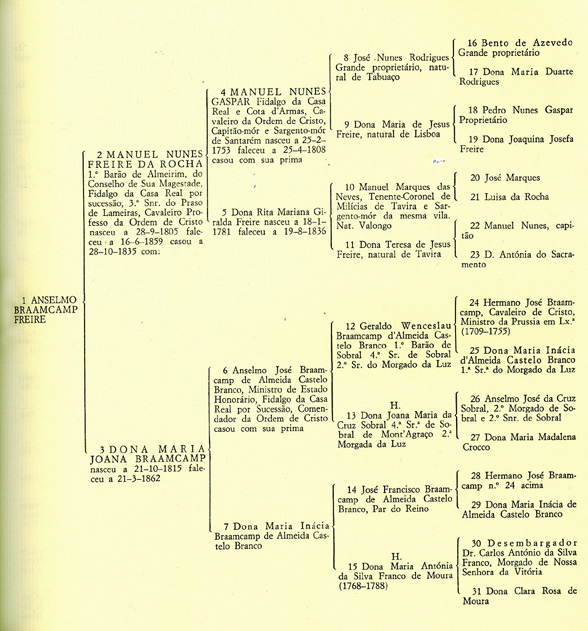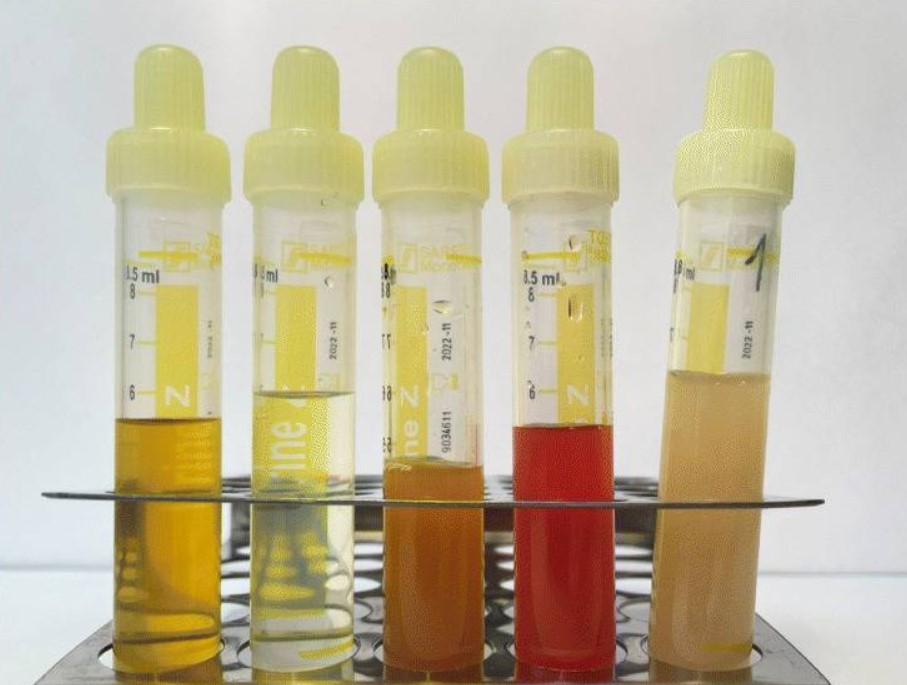|
Barth Syndrome
Barth syndrome (BTHS) is a rare but serious X-linked genetic disorder, caused by changes in phospholipid structure and metabolism. It may affect multiple body systems (though mainly characterized by pronounced pediatric-onset cardiomyopathy), and is potentially fatal. The syndrome is diagnosed almost exclusively in males. Presentation Though not always present, the cardinal characteristics of this multi-system disorder include: cardiomyopathy (dilated or hypertrophic, possibly with left ventricular noncompaction and/or endocardial fibroelastosis), neutropenia (chronic, cyclic, irregular, or intermittent), underdeveloped skeletal musculature and muscle weakness, growth delay, exercise intolerance, cardiolipin abnormalities, and 3-methylglutaconic aciduria. It can be associated with stillbirth. Barth Syndrome is manifested in a variety of ways at birth. A majority of patients are hypotonic at birth; show signs of cardiomyopathy within the first few months of life; and experience ... [...More Info...] [...Related Items...] OR: [Wikipedia] [Google] [Baidu] |
Cardiolipin
Cardiolipin (IUPAC name 1,3-bis(''sn''-3’-phosphatidyl)-''sn''-glycerol, "''sn''" designating stereospecific numbering) is an important component of the inner mitochondrial membrane, where it constitutes about 20% of the total lipid composition. It can also be found in the membranes of most bacteria. The name "cardiolipin" is derived from the fact that it was first found in animal hearts. It was first isolated from the beef heart in the early 1940s by Mary C. Pangborn. In mammalian cells, but also in plant cells, cardiolipin (CL) is found almost exclusively in the inner mitochondrial membrane, where it is essential for the optimal function of numerous enzymes that are involved in mitochondrial energy metabolism. Structure Cardiolipin (CL) is a kind of diphosphatidylglycerol lipid. Two phosphatidic acid moieties connect with a glycerol backbone in the center to form a dimeric structure. So it has four alkyl groups and potentially carries two negative charges. As there are ... [...More Info...] [...Related Items...] OR: [Wikipedia] [Google] [Baidu] |
Tafazzin
Tafazzin is a protein that in humans is encoded by the ''TAFAZZIN'' gene. Tafazzin is highly expressed in cardiac and skeletal muscle, and functions as a phospholipid- lysophospholipid transacylase (it belongs to phospholipid:diacylglycerol acyltransferases). It catalyzes remodeling of immature cardiolipin to its mature composition containing a predominance of tetralinoleoyl moieties. Several different isoforms of the tafazzin protein are produced from the ''TAFAZZIN'' gene. A long form and a short form of each of these isoforms is produced; the short form lacks a hydrophobic leader sequence and may exist as a cytoplasmic protein rather than being membrane-bound. Other alternatively spliced transcripts have been described but the full-length nature of all these transcripts is not known. Most isoforms are found in all tissues, but some are found only in certain types of cells. Mutations in the ''TAFAZZIN'' gene have been associated with mitochondrial deficiency, Barth syndrome, di ... [...More Info...] [...Related Items...] OR: [Wikipedia] [Google] [Baidu] |
3-Methylglutaconic Aciduria
3-Methylglutaconic aciduria (MGA) is any of at least five metabolic disorders that impair the body's ability to make energy in the mitochondria. As a result of this impairment, 3-methylglutaconic acid and 3-methylglutaric acid build up and can be detected in the urine. 3-Methylglutaconic acid is an organic acid. The double carboxylic acid functions are the principal cause of the strength of this acid. 3-methylglutaconic acid can be detected by the presence of the acid function and the double connection that involves reactivity with some specific substances. Presentation Genetics The inheritance patterns of 3-methylglutaconic aciduria differ depending on the gene involved: * Types I and III are inherited in an autosomal recessive pattern, which means two copies of the gene in each cell are altered. Most often, the parents of an individual with an autosomal recessive disorder are carriers of one copy of the altered gene but do not show signs and symptoms of the disorder. * Type ... [...More Info...] [...Related Items...] OR: [Wikipedia] [Google] [Baidu] |
Pedigree Chart
A pedigree chart is a diagram that shows the occurrence of certain traits through different generations of a family, most commonly for humans, show dogs, and race horses. Definition The word pedigree is a corruption of the Anglo-Norman French ''pé de grue'' or "crane's foot", either because the typical lines and split lines (each split leading to different offspring of the one parent line) resemble the thin leg and foot of a Crane (bird), crane or because such a mark was used to denote succession in pedigree charts. A pedigree results in the presentation of family information in the form of an easily readable chart. It can be simply called a "family tree". Pedigrees use a standardized set of symbols, squares represent males and circles represent females. Pedigree construction is a family history, and details about an earlier generation may be uncertain as memories fade. If the sex of the person is unknown, a diamond is used. Someone with the phenotype (trait) in question is repre ... [...More Info...] [...Related Items...] OR: [Wikipedia] [Google] [Baidu] |
Prevalence
In epidemiology, prevalence is the proportion of a particular population found to be affected by a medical condition (typically a disease or a risk factor such as smoking or seatbelt use) at a specific time. It is derived by comparing the number of people found to have the condition with the total number of people studied and is usually expressed as a fraction, a percentage, or the number of cases per 10,000 or 100,000 people. Prevalence is most often used in questionnaire studies. Difference between prevalence and incidence Prevalence is the number of disease cases ''present ''in a particular population at a given time, whereas incidence is the number of new cases that ''develop ''during a specified time period. Prevalence answers "How many people have this disease right now?" or "How many people have had this disease during this time period?". Incidence answers "How many people acquired the disease uring a specified time period". However, mathematically, prevalence is propor ... [...More Info...] [...Related Items...] OR: [Wikipedia] [Google] [Baidu] |
Incidence (epidemiology)
In epidemiology Epidemiology is the study and analysis of the distribution (who, when, and where), patterns and Risk factor (epidemiology), determinants of health and disease conditions in a defined population, and application of this knowledge to prevent dise ..., incidence reflects the number of new cases of a given medical condition in a population within a specified period of time. Incidence proportion Incidence proportion (IP), also known as cumulative incidence, is defined as the probability that a particular event, such as occurrence of a particular disease, has occurred in a specified period: Incidence = \frac For example, if a population contains 1,000 persons and 28 develop a condition from the time the disease first occurred until two years later, the cumulative incidence is 28 cases per 1,000 persons, i.e. 2.8%. Incidence rate The incidence rate can be calculated by dividing the number of subjects developing a disease by the total time at risk from all patie ... [...More Info...] [...Related Items...] OR: [Wikipedia] [Google] [Baidu] |
University Of Florida
The University of Florida (Florida or UF) is a public university, public land-grant university, land-grant research university in Gainesville, Florida, United States. It is a senior member of the State University System of Florida and a preeminent university in the state. The university traces its origins to 1853 and has operated continuously on its Gainesville campus since September 1906. After the Florida state legislature's creation of performance standards in 2013, the Florida Board of Governors designated the University of Florida as a "preeminent university". The University of Florida is one of three members of the Association of American Universities in Florida and is Carnegie Classification of Institutions of Higher Education, classified among "R1: Doctoral Universities – Very high research spending and doctorate production". The university is Higher education accreditation in the United States, accredited by the Southern Association of Colleges and Schools (SACS). ... [...More Info...] [...Related Items...] OR: [Wikipedia] [Google] [Baidu] |
Urinalysis
Urinalysis, a portmanteau of the words ''urine'' and ''analysis'', is a Test panel, panel of medical tests that includes physical (macroscopic) examination of the urine, chemical evaluation using urine test strips, and #Microscopic examination, microscopic examination. Macroscopic examination targets parameters such as color, clarity, odor, and specific gravity; urine test strips measure chemical properties such as pH, glucose concentration, and protein levels; and microscopy is performed to identify elements such as Cell (biology), cells, urinary casts, Crystalluria, crystals, and organisms. Background Urine is produced by the filtration of blood in the kidneys. The formation of urine takes place in microscopic structures called nephrons, about one million of which are found in a normal human kidney. Blood enters the kidney though the renal artery and flows through the kidney's vasculature into the Glomerulus (kidney), glomerulus, a tangled knot of capillaries surrounded by Bow ... [...More Info...] [...Related Items...] OR: [Wikipedia] [Google] [Baidu] |
IPLA2-VIA
85 kDa calcium-independent phospholipase A2, also known as 85/88 kDa calcium-independent phospholipase A2, Group VI phospholipase A2, Intracellular membrane-associated calcium-independent phospholipase A2 beta, or Patatin-like phospholipase domain-containing protein 9 is an enzyme that in humans is encoded by the ''PLA2G6'' gene. Structure The ''PLA2G6'' gene is located on the p arm of chromosome 22 at position 13.1 and it spans 80,605 base pairs. The ''PLA2G6'' gene produces an 18.6 kDa protein composed of 166 amino acids. The resulting protein's structure has been shown to contain a lipase motif and 8 ankyrin repeats. Different from rodent PLA2G6, which is known to share 90% overall amino acid sequence identity with that of the humans, the human PLA2G6 protein contains a 54-residue insertion which codes for a proline-rich region. This insertion has been shown to disrupt the last putative ankyrin repeat, as well as function as a linker region that segregates the N-terminal p ... [...More Info...] [...Related Items...] OR: [Wikipedia] [Google] [Baidu] |
Mitochondrion
A mitochondrion () is an organelle found in the cell (biology), cells of most eukaryotes, such as animals, plants and fungi. Mitochondria have a double lipid bilayer, membrane structure and use aerobic respiration to generate adenosine triphosphate (ATP), which is used throughout the cell as a source of chemical energy. They were discovered by Albert von Kölliker in 1857 in the voluntary muscles of insects. The term ''mitochondrion'', meaning a thread-like granule, was coined by Carl Benda in 1898. The mitochondrion is popularly nicknamed the "powerhouse of the cell", a phrase popularized by Philip Siekevitz in a 1957 ''Scientific American'' article of the same name. Some cells in some multicellular organisms lack mitochondria (for example, mature mammalian red blood cells). The multicellular animal ''Henneguya zschokkei, Henneguya salminicola'' is known to have retained mitochondrion-related organelles despite a complete loss of their mitochondrial genome. A large number ... [...More Info...] [...Related Items...] OR: [Wikipedia] [Google] [Baidu] |
Electron Transport Chain
An electron transport chain (ETC) is a series of protein complexes and other molecules which transfer electrons from electron donors to electron acceptors via redox reactions (both reduction and oxidation occurring simultaneously) and couples this electron transfer with the transfer of protons (H+ ions) across a membrane. Many of the enzymes in the electron transport chain are embedded within the membrane. The flow of electrons through the electron transport chain is an exergonic process. The energy from the redox reactions creates an electrochemical proton gradient that drives the synthesis of adenosine triphosphate (ATP). In aerobic respiration, the flow of electrons terminates with molecular oxygen as the final electron acceptor. In anaerobic respiration, other electron acceptors are used, such as sulfate. In an electron transport chain, the redox reactions are driven by the difference in the Gibbs free energy of reactants and products. The free energy released when ... [...More Info...] [...Related Items...] OR: [Wikipedia] [Google] [Baidu] |
Cardiolipin
Cardiolipin (IUPAC name 1,3-bis(''sn''-3’-phosphatidyl)-''sn''-glycerol, "''sn''" designating stereospecific numbering) is an important component of the inner mitochondrial membrane, where it constitutes about 20% of the total lipid composition. It can also be found in the membranes of most bacteria. The name "cardiolipin" is derived from the fact that it was first found in animal hearts. It was first isolated from the beef heart in the early 1940s by Mary C. Pangborn. In mammalian cells, but also in plant cells, cardiolipin (CL) is found almost exclusively in the inner mitochondrial membrane, where it is essential for the optimal function of numerous enzymes that are involved in mitochondrial energy metabolism. Structure Cardiolipin (CL) is a kind of diphosphatidylglycerol lipid. Two phosphatidic acid moieties connect with a glycerol backbone in the center to form a dimeric structure. So it has four alkyl groups and potentially carries two negative charges. As there are ... [...More Info...] [...Related Items...] OR: [Wikipedia] [Google] [Baidu] |





